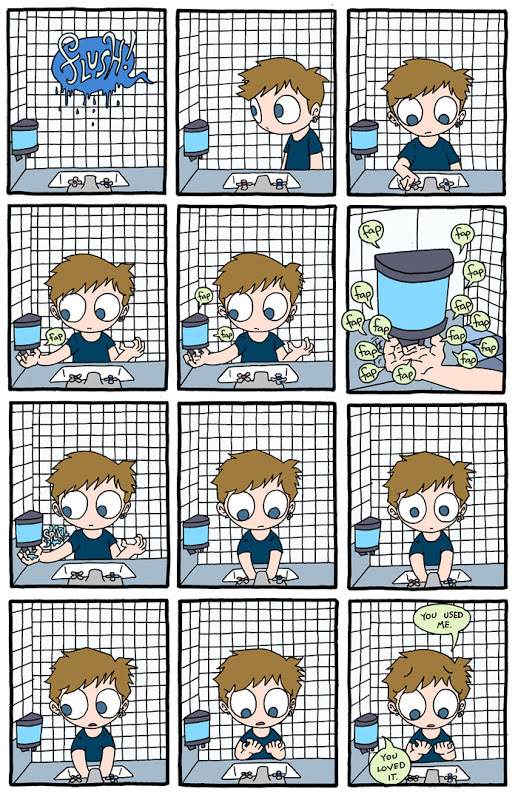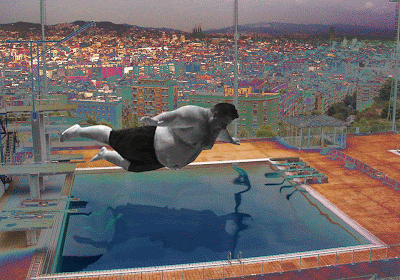Soap is a kind of intermediary agent, able to break the chemical incommunicability between water and fat, caused by their opposite socio-chemical attitudes.
Water is a menage à trois among two hydrogens (H) and an oxygen (O), which associate in order to share their electrons. What comes out of this weird connection is a quite stable chemical relationship, and a molecule - H2O - electrically neutral, and with all reasons in the world to be happy and satisfied.
However, this apparently calm neutrality hides a certain electric turbulence.
Oxygen tends to pull the shared negatively charged electrons on its side, accumulating a partial negative charge. This leaves the two hydrogens partially uncovered, giving each of them a tiny positive charge.
Water should then be described rather as +H2O- than H2O.
Because of their chemo-sexual ambiguity, water molecules can pair with each other in all possible combinations. And they do it all the time.
Moreover, when a positively charged molecule (a positive ion) plunges in water, it is immediately surrounded by a throng of charmingly negatively charged oxygens, behaving as though they were not in a relation, but in fact all already engaged in threesomes with hydrogen atoms.
The same happens with negative ions, although in this case the 'welcome party' is made of hydrogens.
Therefore, all kind of ions feel perfectly at ease among H2O molecules: that's why they are soluble in water.
The most interesting thing is that some neutral molecules as well (such as sugars) are sensitive to the temptations of water. Sugars also have an underground electric turmoil – arising form an unequal distribution of electrons – creating local areas of positivity and negativity. These are exploited by H2O molecules which – not unlike the bisexual transvestite in the Rocky Horror Picture Show – give everyone what it wants: that is, a charge opposed to its own.
 |
| From funnyforgirls.com |
When fats come in contact with water, they instinctively recoil from its little provocative molecules, feeling no affinity at all for them. In turn, H2O molecules soon realize that a sexual approach is unthinkable, and leave fats to themselves.
As a result, fat molecules end up being completely isolated, and take refuge in drop-enclosures, floating on the water or attached to some convenient surface (such as the bottom of a frying pan).
Fats are therefore insoluble in water.
A soap molecule is a sort of hybrid, with the body of a fat molecule and a negatively charged head. While it is inside the bar of soap, its negative charge is plugged by a positive ion (usually sodium or potassium). As soon as the soap dissolves, the positive ion swims away, lost to the temptations of water.
Left alone, the soap molecule tries to protect itself from the annoying presence of H2O molecules surrounding it. In fact, because of its close structural resemblance with fats, it shares most of their repulsion for water.
 |
| From stuffonbread.com |
But having a negative charge at one end allows it to tolerate much better the situation: soap molecules distribute themselves so as to form a microscopic bubble, with their charged parts on the outside - in contact with water - and the fat hydrophobic portions on the inside, forming a sort of greasy club where no water molecule would ever dare to intrude. The negatively charged surface is nevertheless perfectly at ease with H2O molecules: that's why soap dissolves so well in water.
When the fats of an oily spot, clinging for their life to the wall of a pot, meet a tiny bubble of soap, they feel as relieved as a victim of a flood who, from the roof of a water surrounded building, spots a rescue boat. Once they have jumped into the soap bubble, they are protected by the shell of negative charges from the hostile world of water. They can finally relax and flow away with the stream.
Other Sources
 |
| The difficult relationship between fats and water. Created for biocomiche.it by Luca Prete |

Nessun commento:
Posta un commento